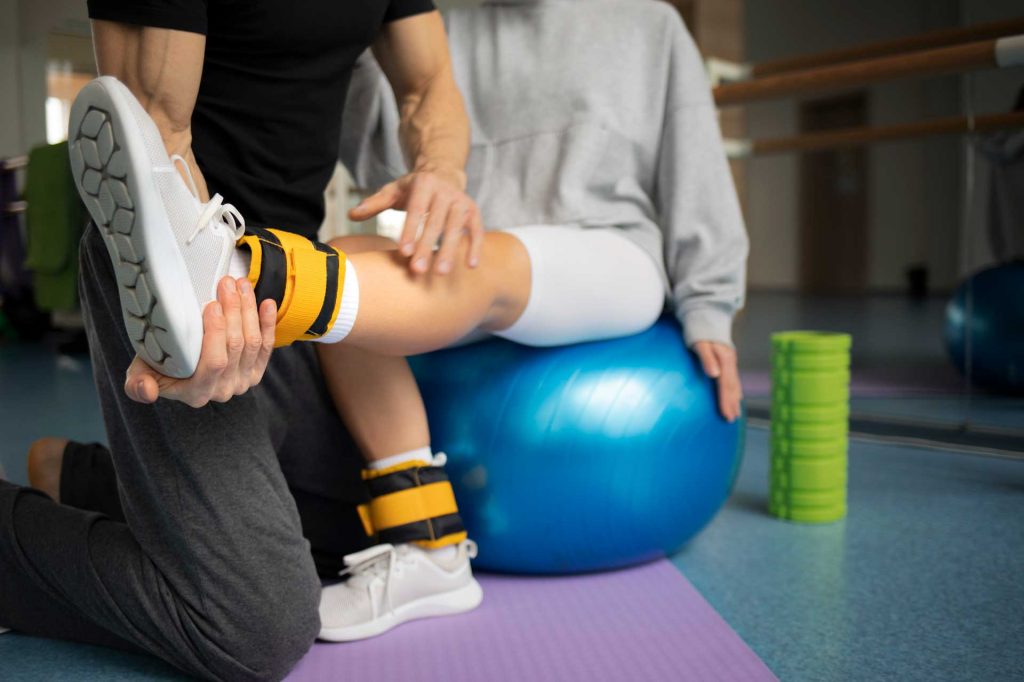
MS Exercises for Better Balance and Coordination
Overview
Exercise and physical activity are important to your health and well-being. If you have multiple sclerosis (MS), a condition where the immune system attacks the protective sheath that covers nerve fibers and causes communication problems between the brain and the rest of your body, you may find that exercise isn’t as easy as it once was.
Consider using these stretches and exercises to increase your fitness levels and to improve your balance and coordination.
Consult your doctor before you begin an exercise program. Your doctor can help you create a plan that fits your capabilities and lifestyle.
Exercises for balance
Stretching is one of the most effective exercises for improving balance and coordination. It’s also easy for people of all physical activity levels.
Stretching can help improve your posture and prevent aches and pains associated with MS. Gentle stretching can also help warm up muscles for movement. This is important if you’ve been inactive for a long period of time.
Warming up and slowly moving your muscles will also help prevent torn muscles, strains, and sprains. Stretch after you wake up or after sitting for long periods of time. Seated stretching is easier and safer for beginners.
Stretching exercise: Hip marching
- Sit in a sturdy chair with your back touching the back of the chair.
- Place your hands comfortably on your legs.
- Slowly lift your left leg straight up, leaving the knee bent.
- Hold for a count of 5 (or as long as comfortable), and then return your foot to the floor.
- Repeat with the other leg.
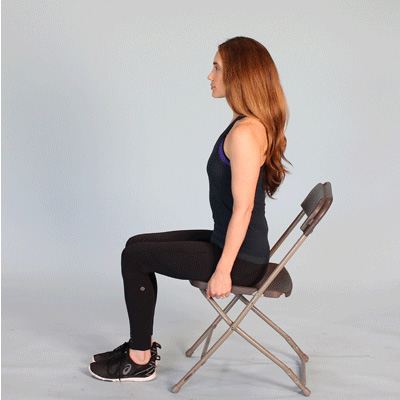
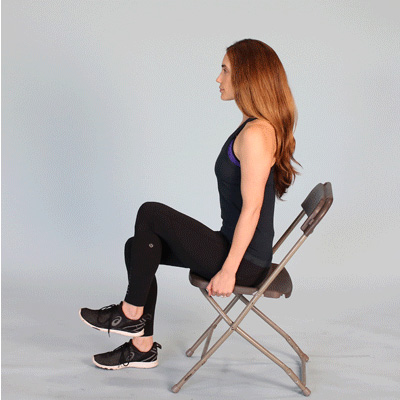
Pilates for MS
Pilates may be a great option for someone with early symptoms of MS. Pilates exercises can help activate the smaller stabilizing muscles that make human movement possible, says Dani Singer, certified personal trainer.
“[The roll-up] is a great exercise to activate the deep abdominal muscles that are responsible for stabilizing the spine,” says Singer. “Maintaining this function is vital for balance, which can be one of the biggest limiters for individuals with advanced MS.”
Pilates exercise: Roll ups
- Lie down on a mat with your legs straight. Reach overhead and hold the end of the mat with your fingertips.
- Exhale and try to pull your stomach in towards the floor.
- Still holding onto the mat, slowly peel the shoulder blades and upper back off the floor, while gently pushing the head back into the mat.
- Pause for two seconds, trying to feel that contraction in the abdominals.
- Slowly reverse the movement, lowering the upper back down to the floor.


Spasticity exercises
Spasticity is one of the more common symptoms of MS. The condition can range from mild muscle tightness to pain or tightness in and around joints, to uncontrollable spasms of extremities, usually of the legs.
The Achilles tendon release helps release tension in the soleus, a calf muscle that is primarily used for pushing off the ground while walking. Often times, people with MS experience limited mobility when this muscle gets stiff, says Singer.
Spasticity exercise: Achilles tendon release
- While seated in a chair or on the floor, extend one leg and wrap a band or strap around the ball of that foot.
- Lengthen your spine by sitting up tall and gently pulling your stomach in towards your spine.
- Maintaining that upper body posture, slowly pull on the band or strap, pulling your foot back towards you. The movement should occur at the ankle joint, lengthening the overactive muscles in the back of the lower leg and heel.

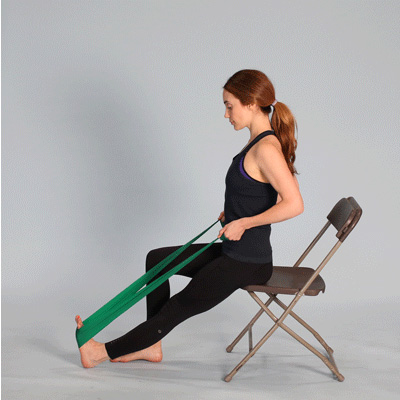
Leg exercises
To help strengthen the leg muscles, the assisted butt kick requires assistance from a practitioner, friend, or family member, says Singer.
Leg exercise: Assisted butt kicks
- Stand and hold onto the back of a chair with both hands for support.
- Lift your heel back behind you and try to touch your butt. The movement should occur at the knee joint.
- When you can’t get any higher, have a friend gently assist you with her hands to lift your heel as high as possible, without discomfort.
- Lower your foot back down to the ground as slowly as possible.
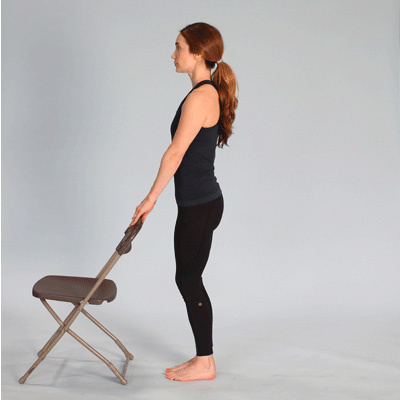
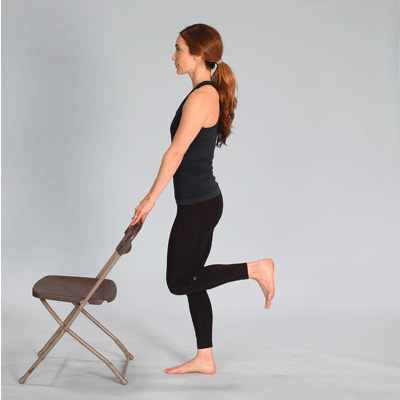
Chair exercises
Stiffness in the shoulder girdle can be a big cause of pain and immobility for individuals with MS, says Brittany Ferri, occupational therapist. By doing arm raises to stretch the shoulder joints, you’re working to keep the joints lubricated so they can remain loose and flexible.
Chair exercise: Arm raise
- While sitting in a chair with your spine straight and tall against the back of the chair, move one arm out to your side.
- Bring that same arm all the way out and up over your head while keeping your entire arm straight.
- Once your arm is above your head, hold it there while taking a full, deep breath in, and letting that same breath out.
- Bring your arm back down to rest at your side.
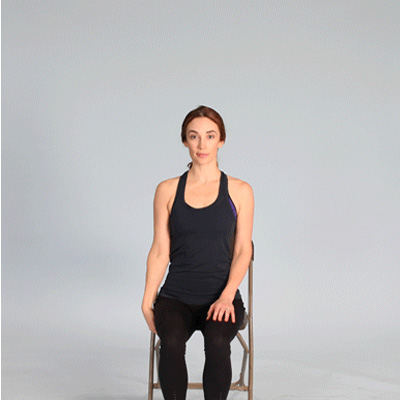

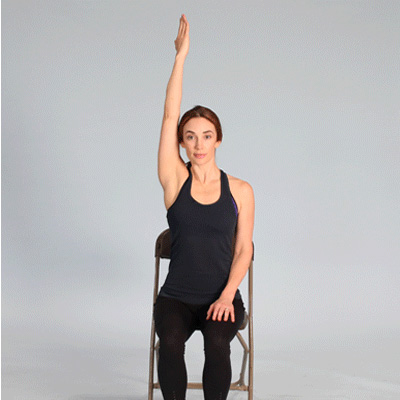
Weight training
Strength in the postural muscles is crucial for people with MS, says Tim Liu, personal trainer and nutrition coach. Strength and muscle are lost in those areas as the condition progresses. Standing row exercises can help strengthen these muscles.
Weight training exercise: Standing row
- Wrap an exercise band around a pole or rod and grab the handles of the band. Take a few steps back from the pole.
- Keeping your core tight with your knees soft, pull the handles towards you until your shoulders are in line with your elbows.
- Squeeze your shoulder blades together, then straighten your arms back to starting position.
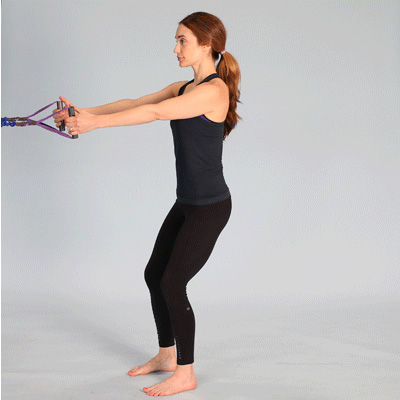
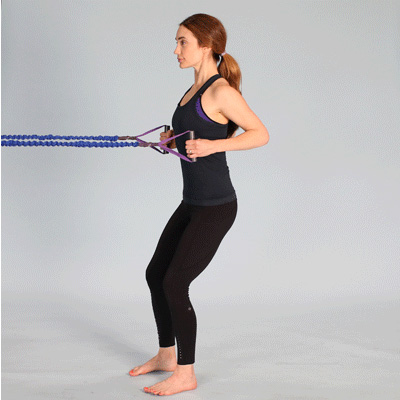
Benefits of exercise
Exercise and physical activity can help manage many symptoms of MS. Studies have shown that aerobic exercise programs for people living with MS can improve:
- cardiovascular fitness
- strength
- bladder and bowel function
- fatigue
- mood
- cognitive function
- bone density
- flexibility
Risks
Some people with MS might overheat quickly when exercising, while others may experience balance issues or their legs may begin to tingle, says Chris Cooper, certified personal trainer.
However, Cooper believes that sticking to the basics of squatting, hinging, pushing, pulling and overall movement can help with symptoms of the condition.
Takeaway
An exercise program may need to be adjusted as changes occur in MS symptoms. Any person with MS who is initiating a new exercise program should also consult with a physician before starting.